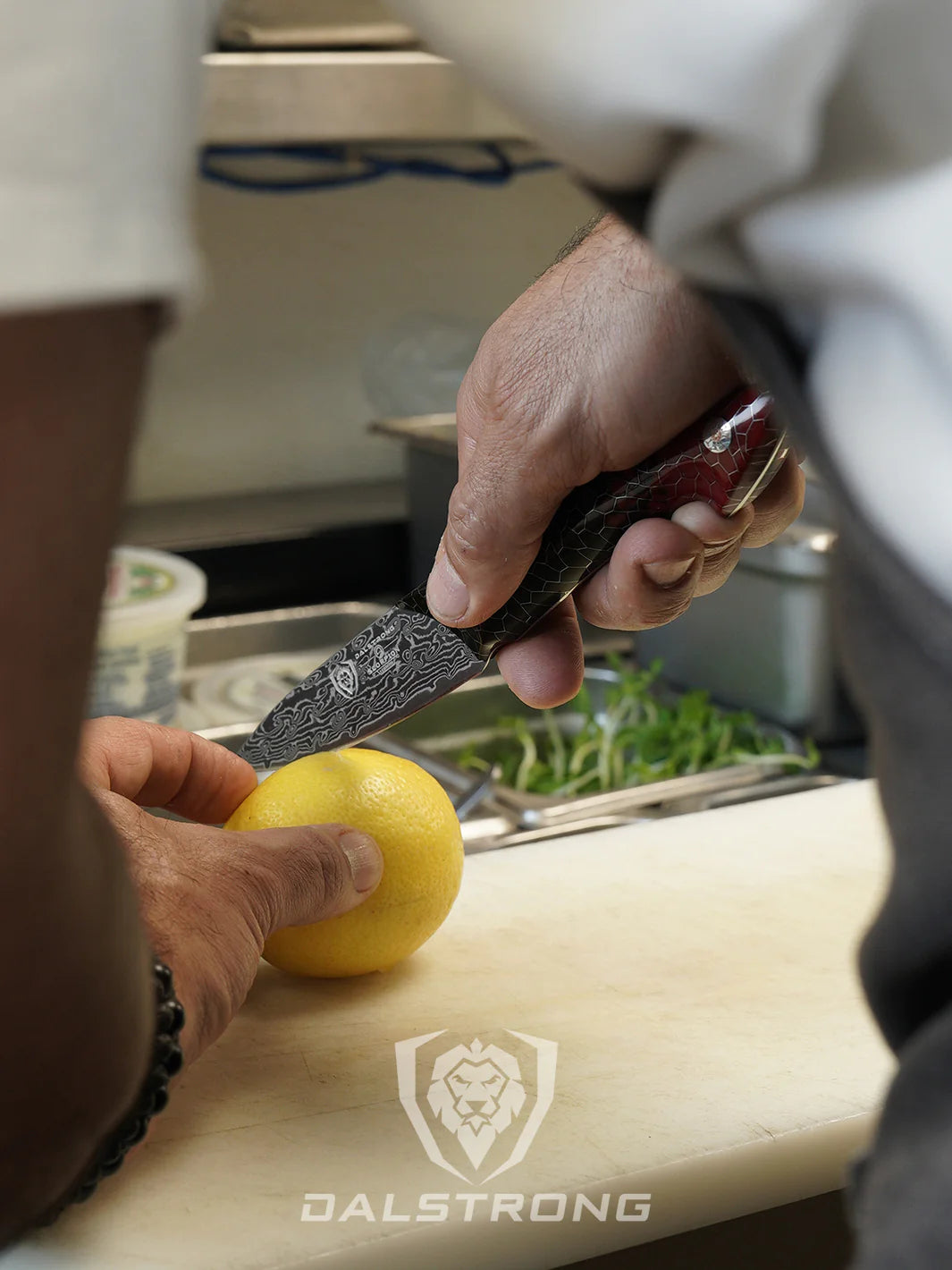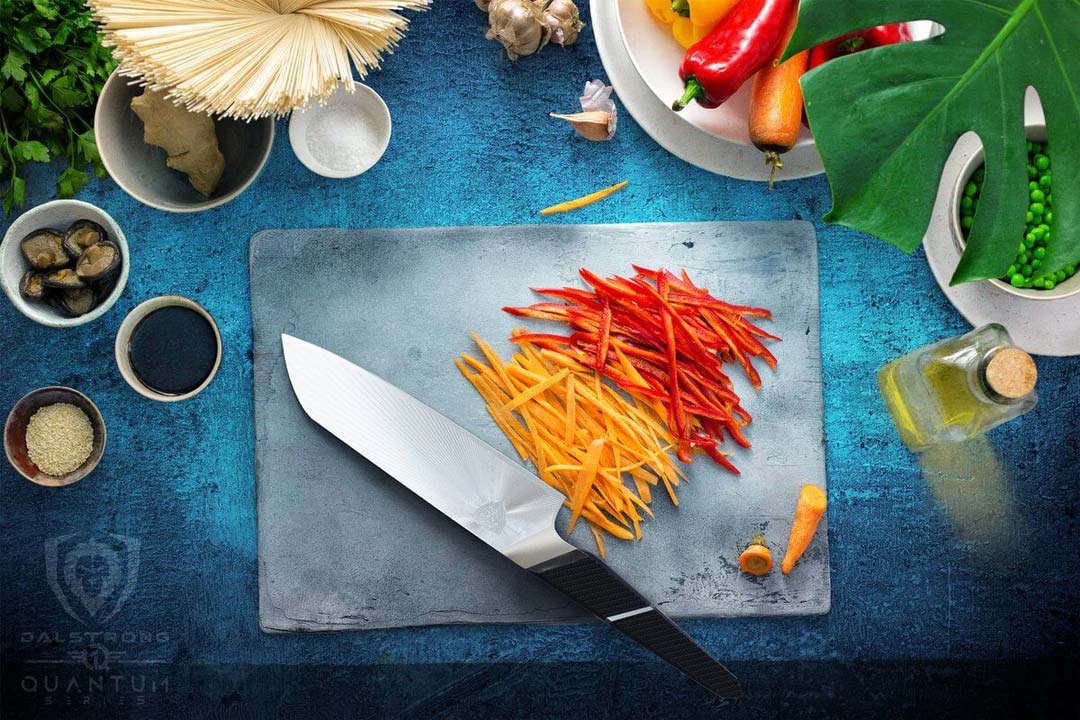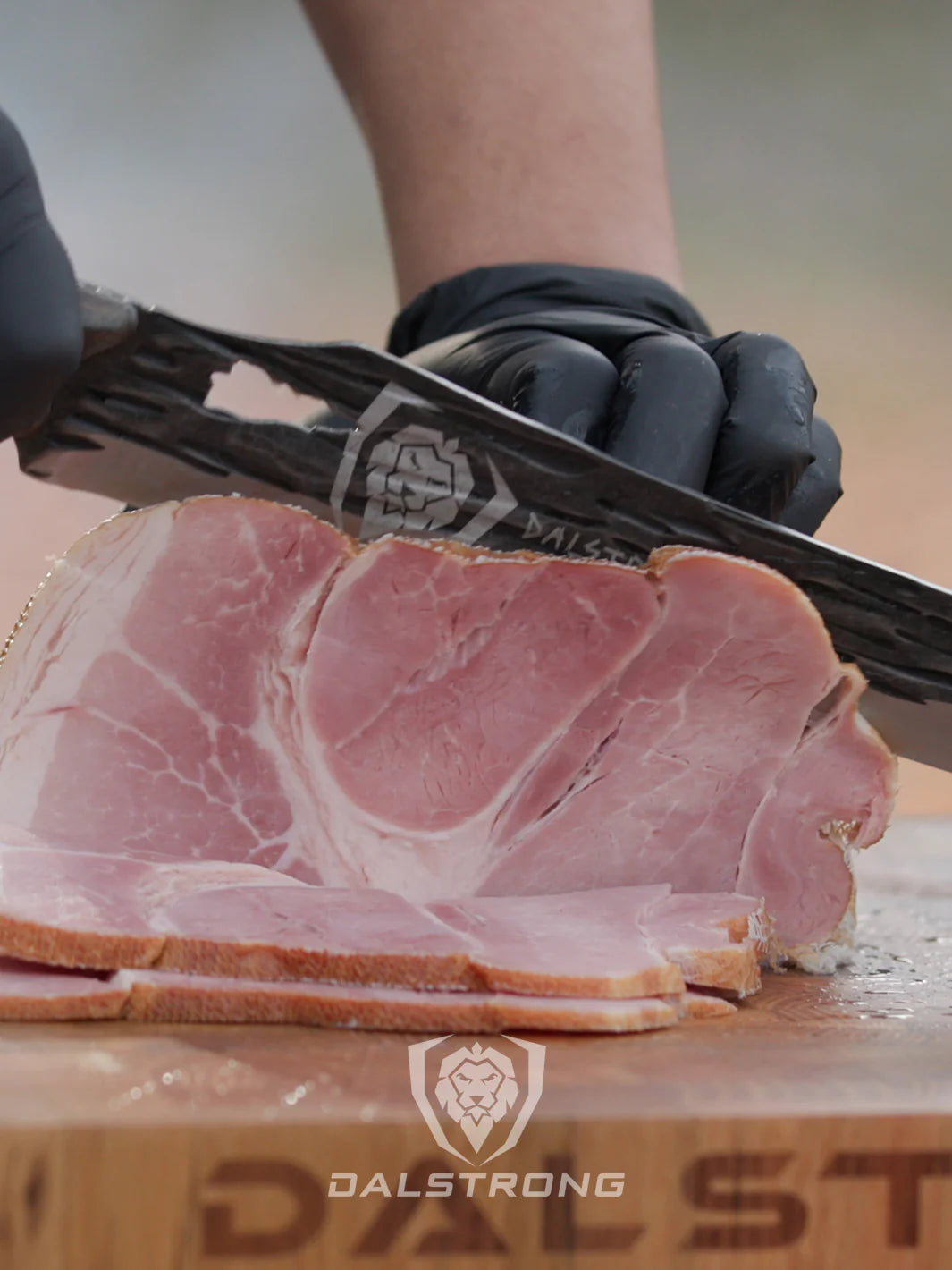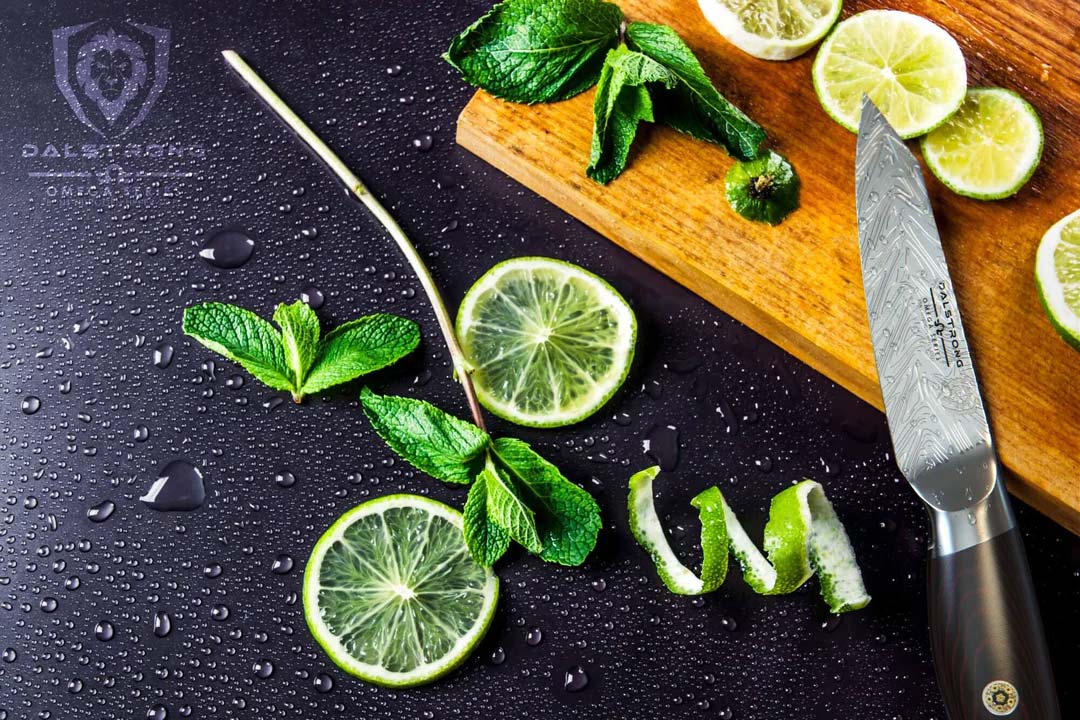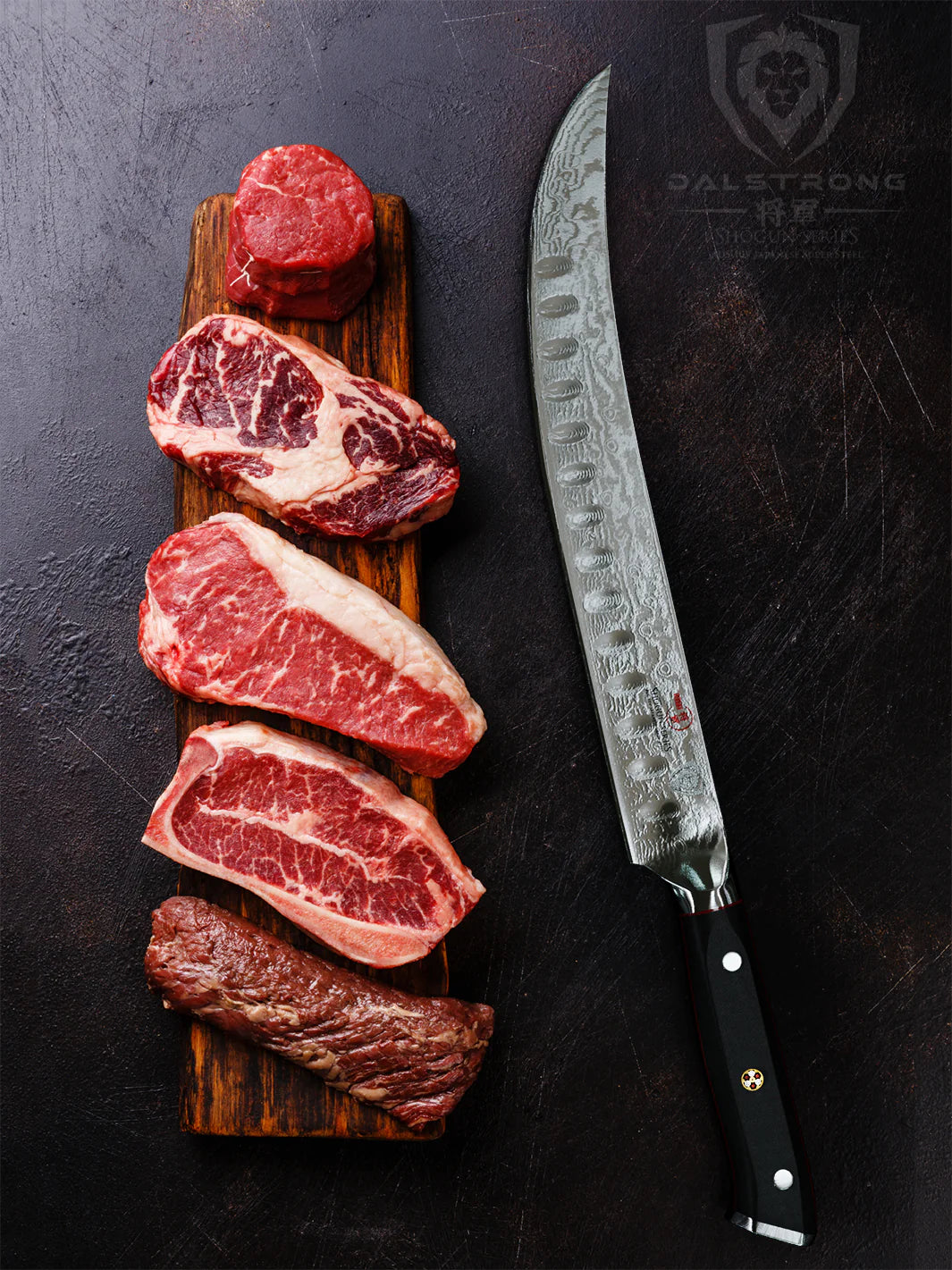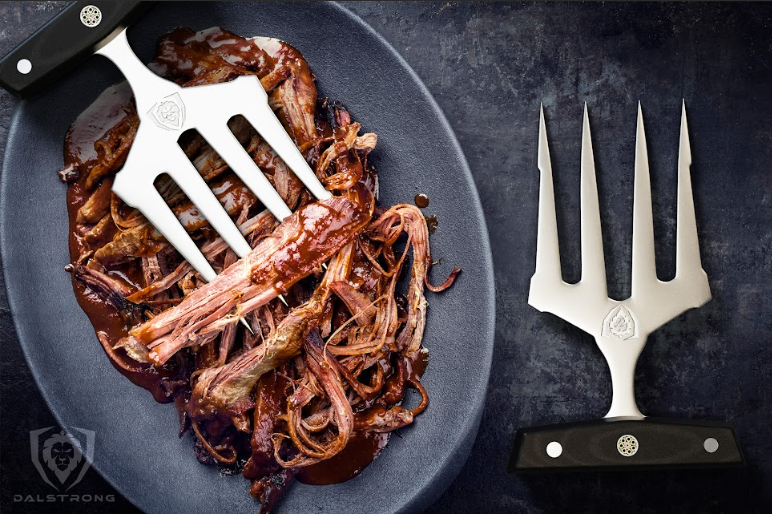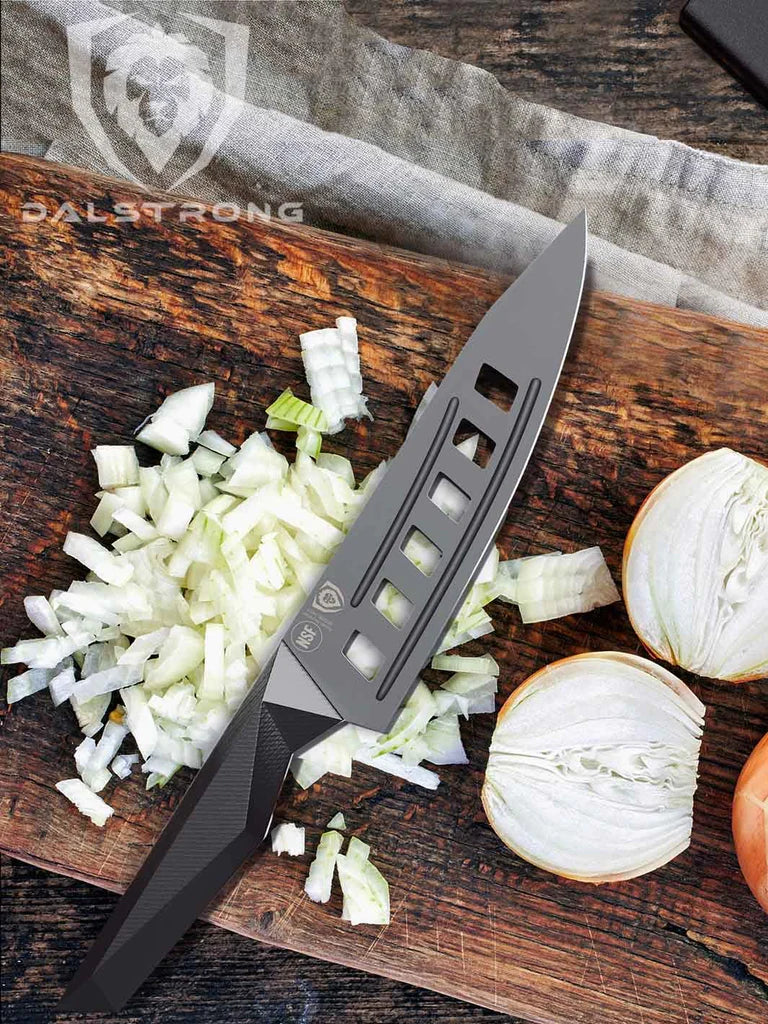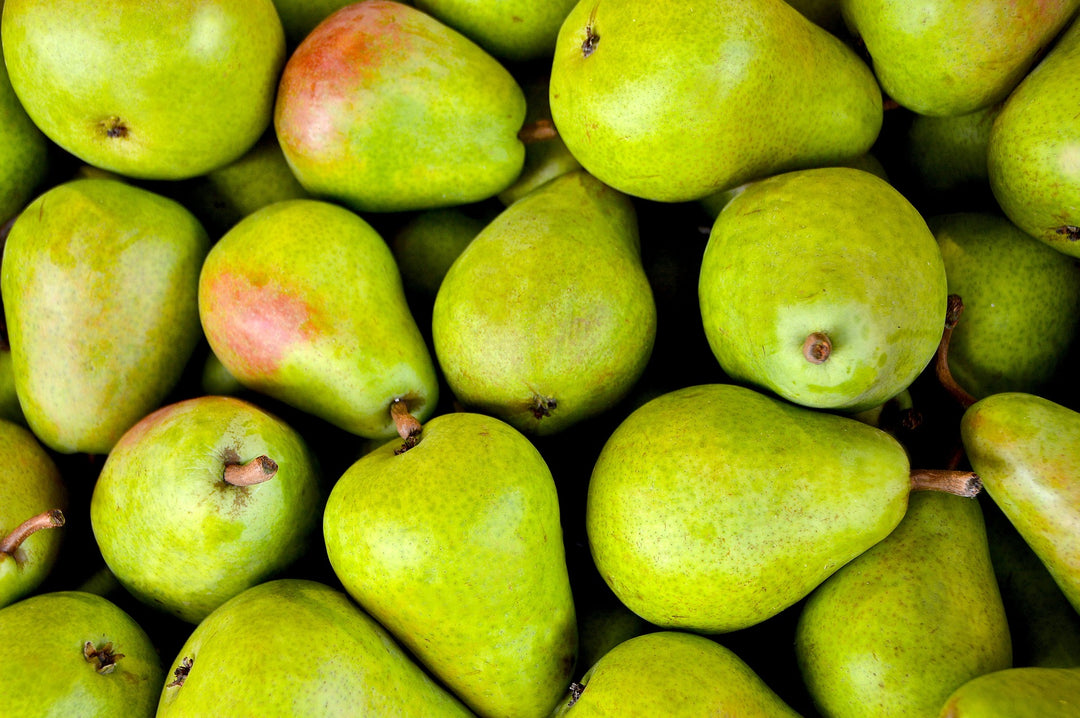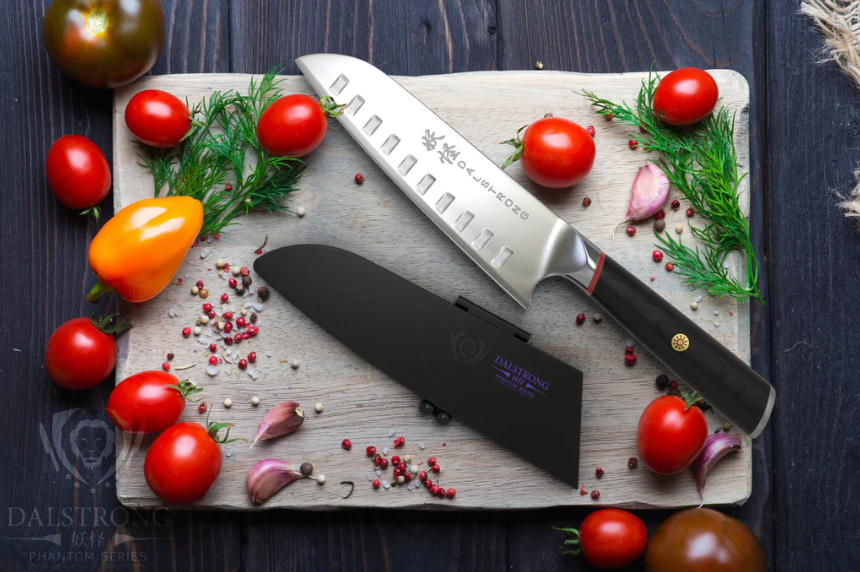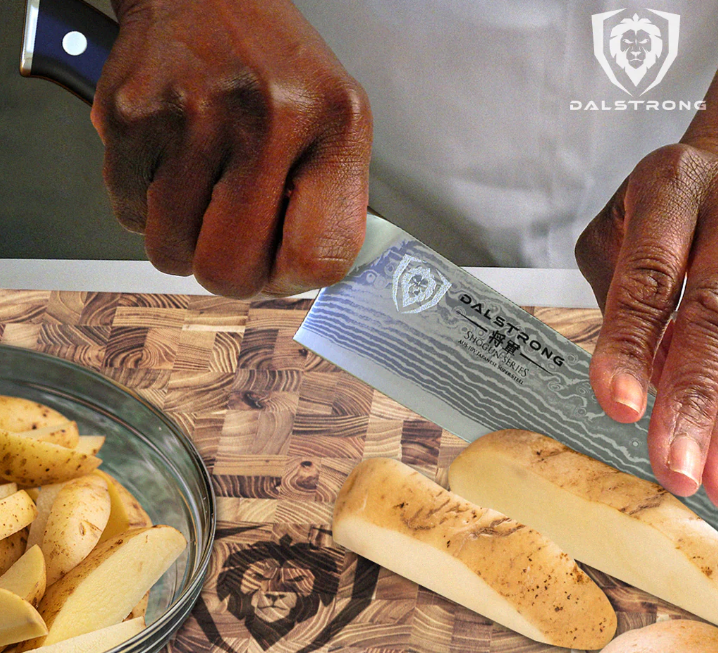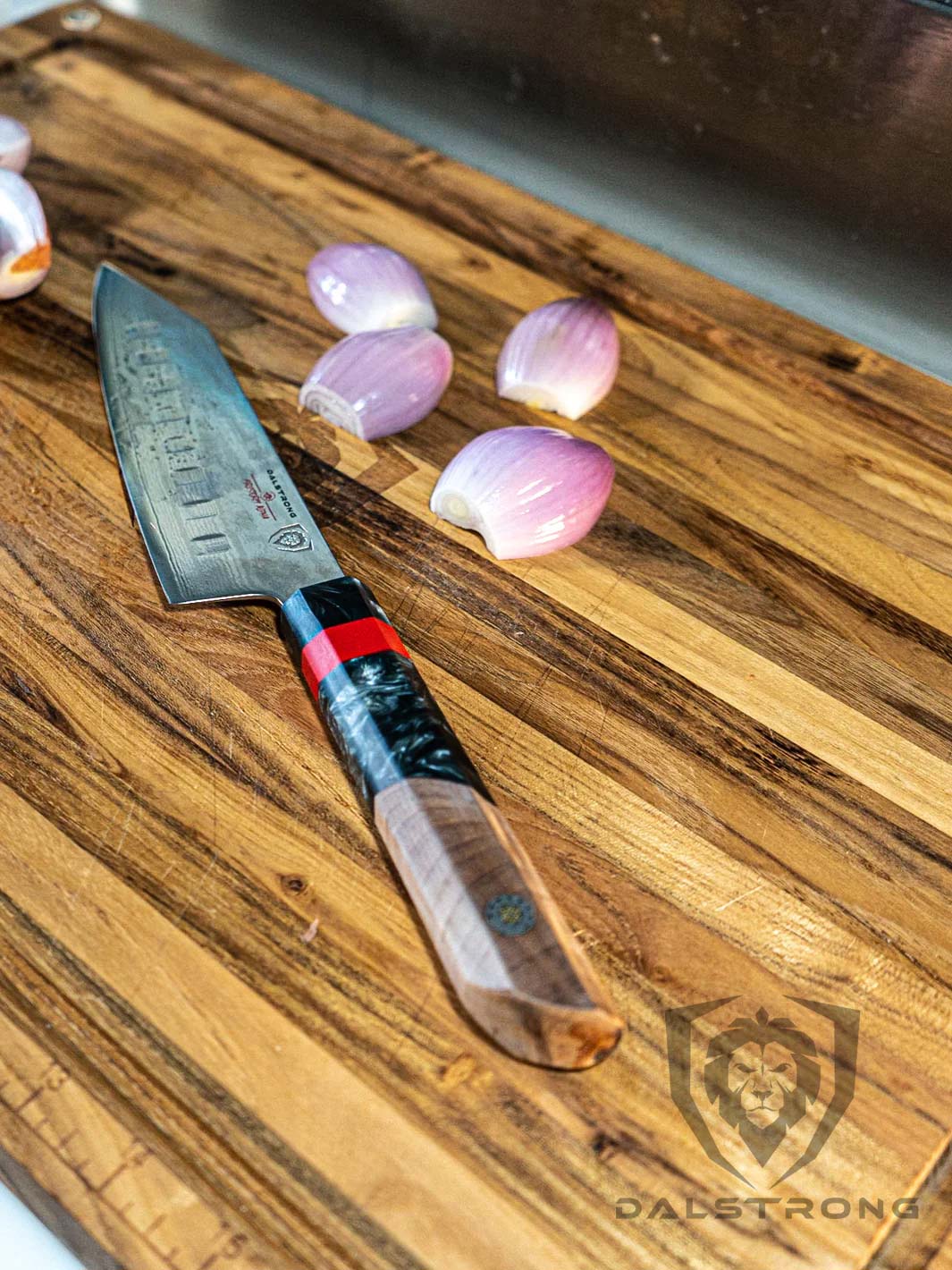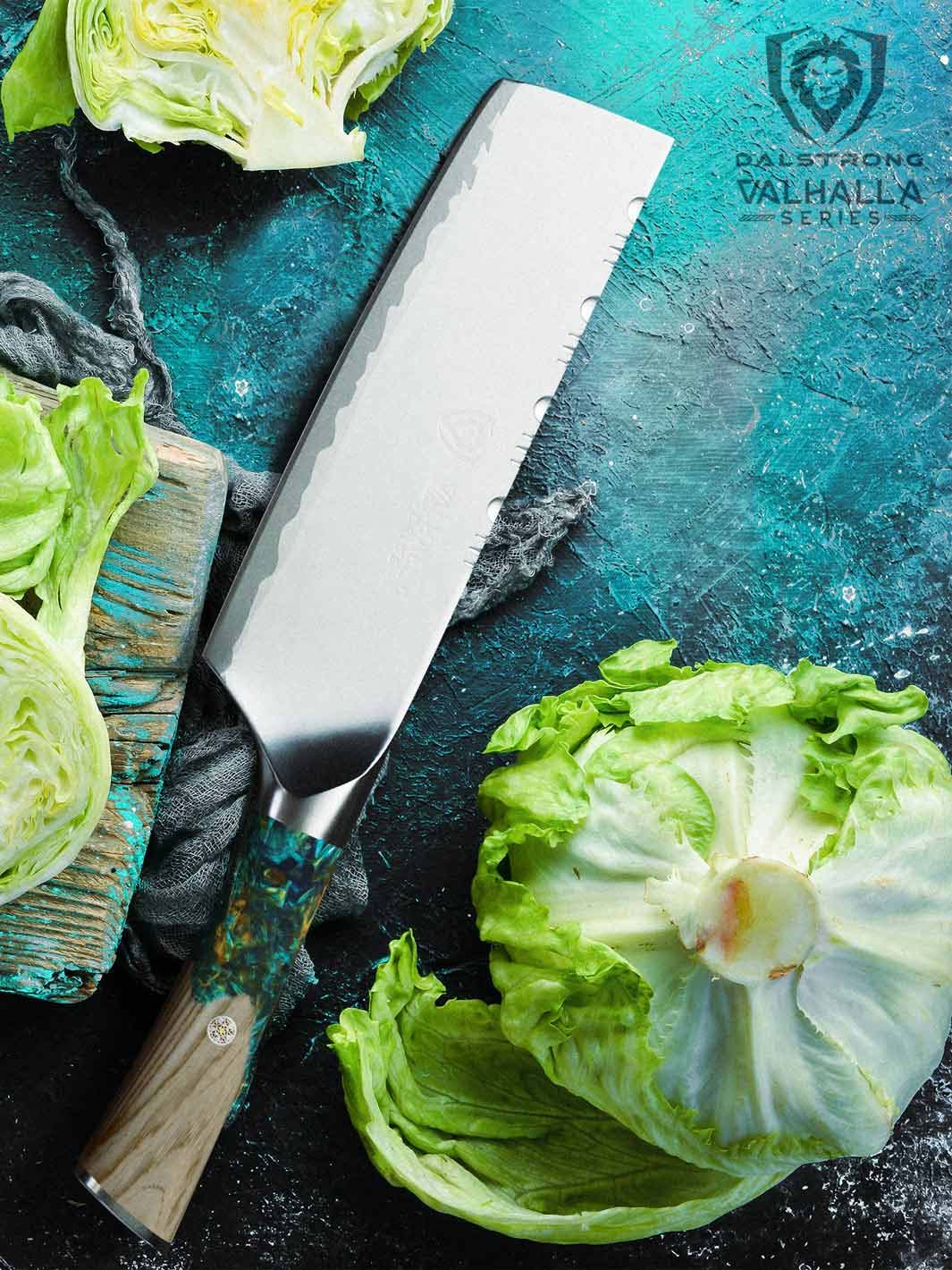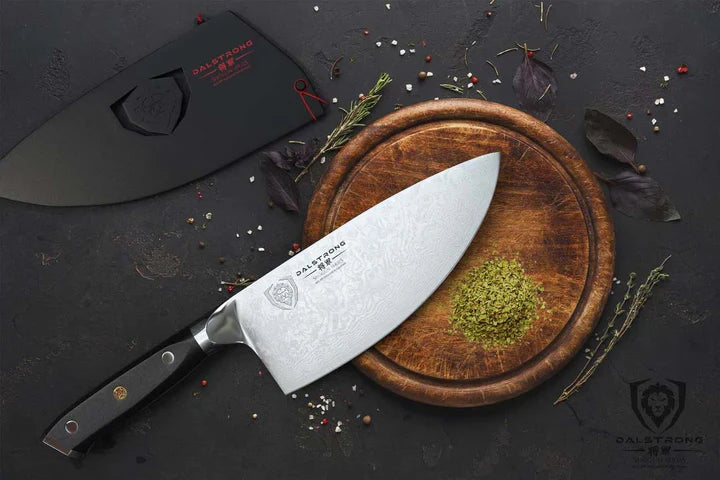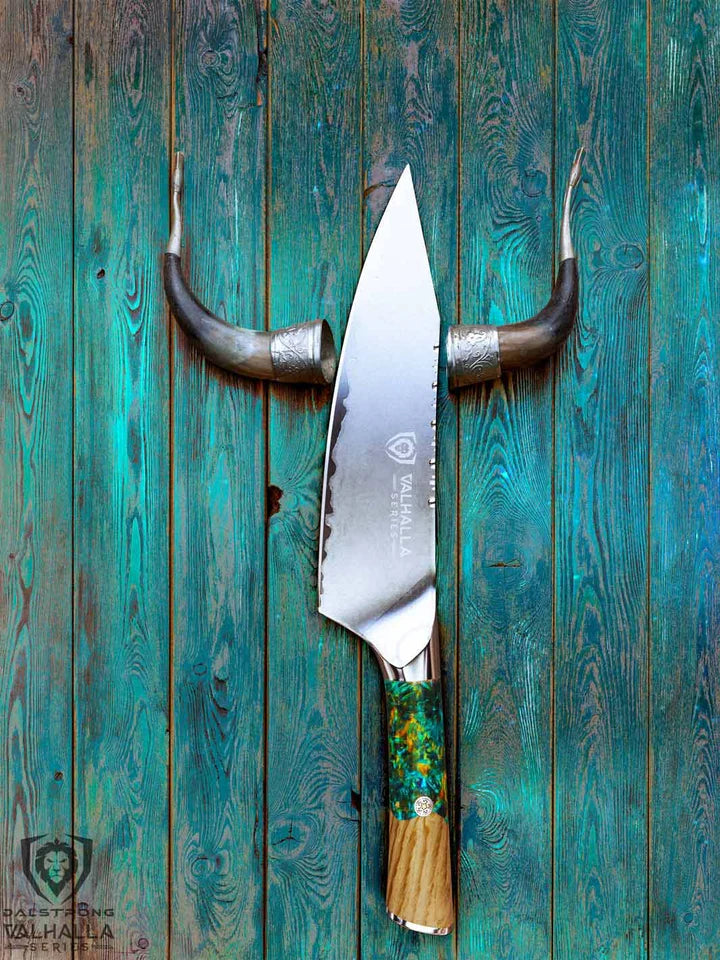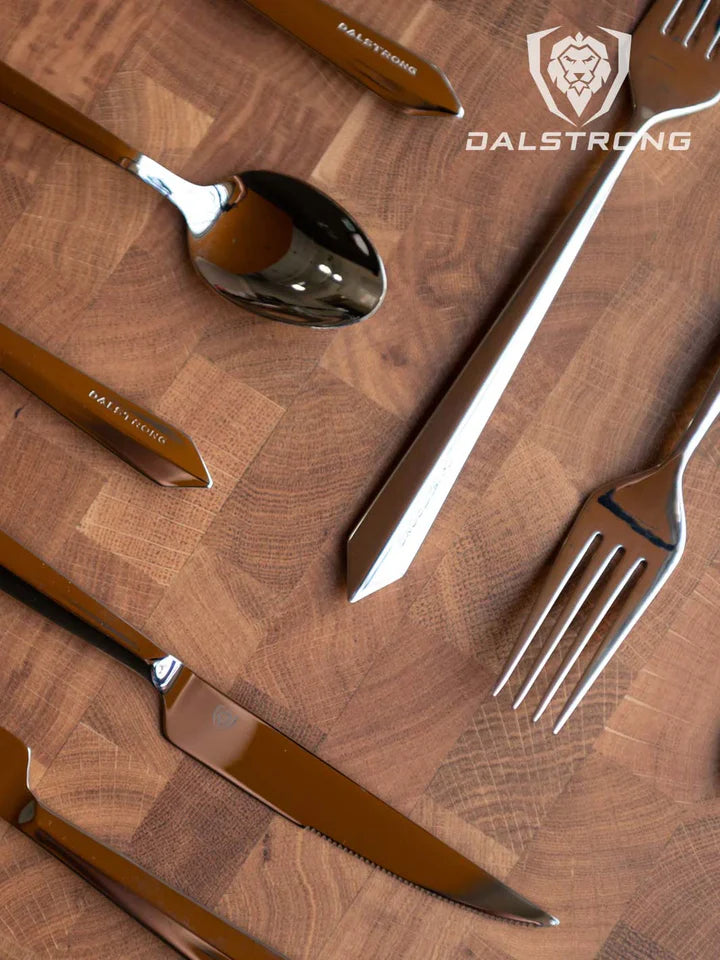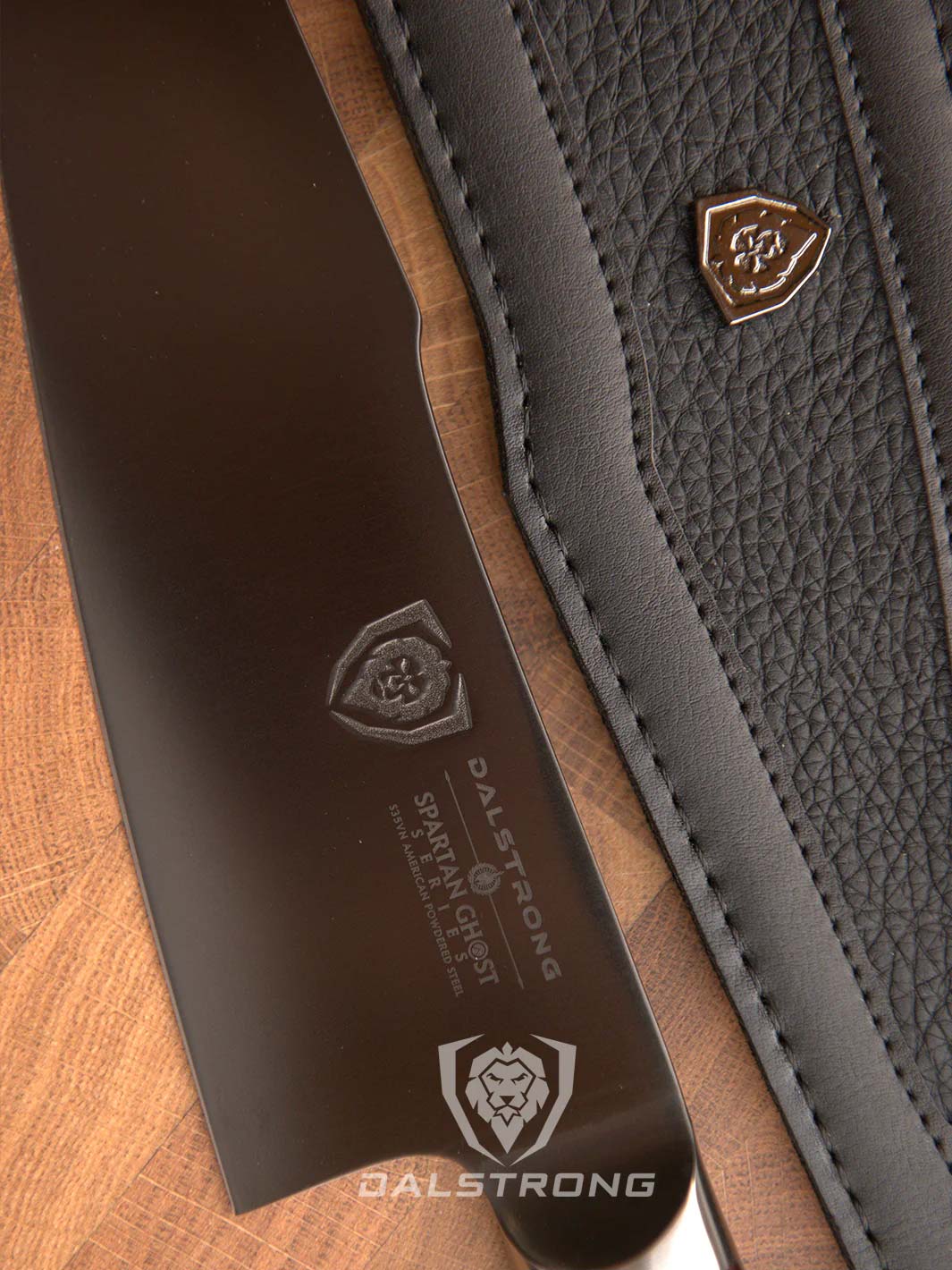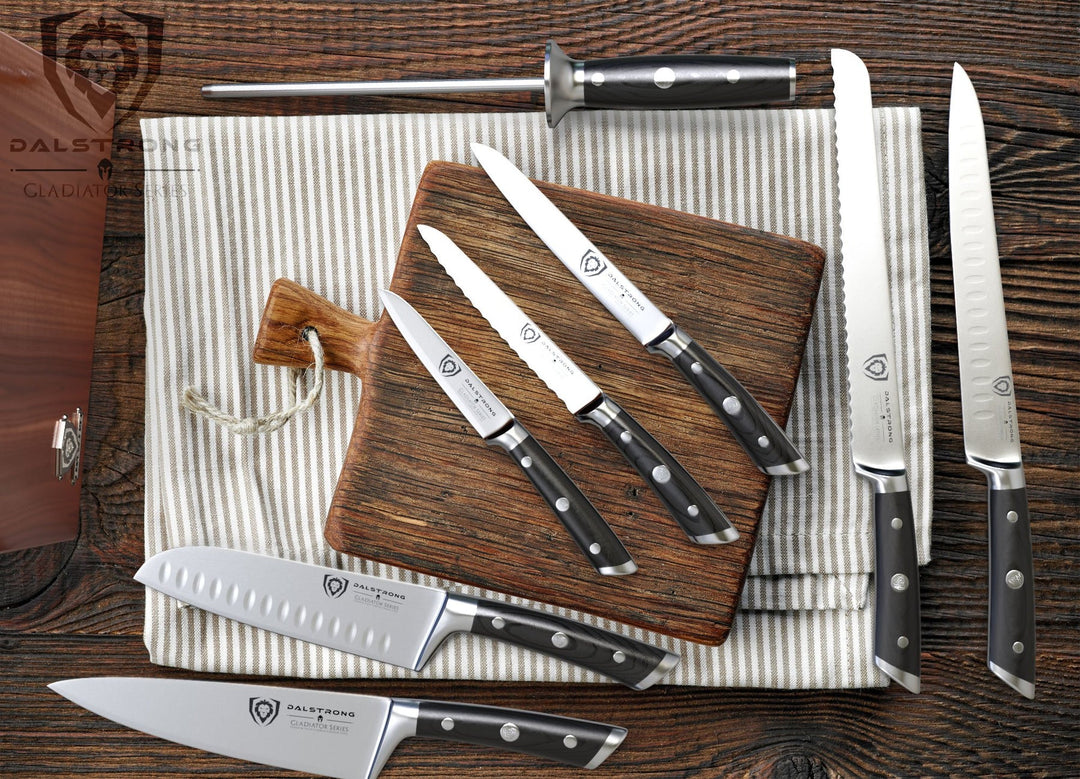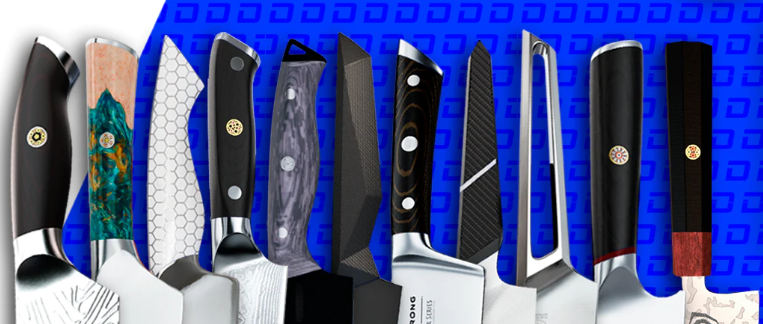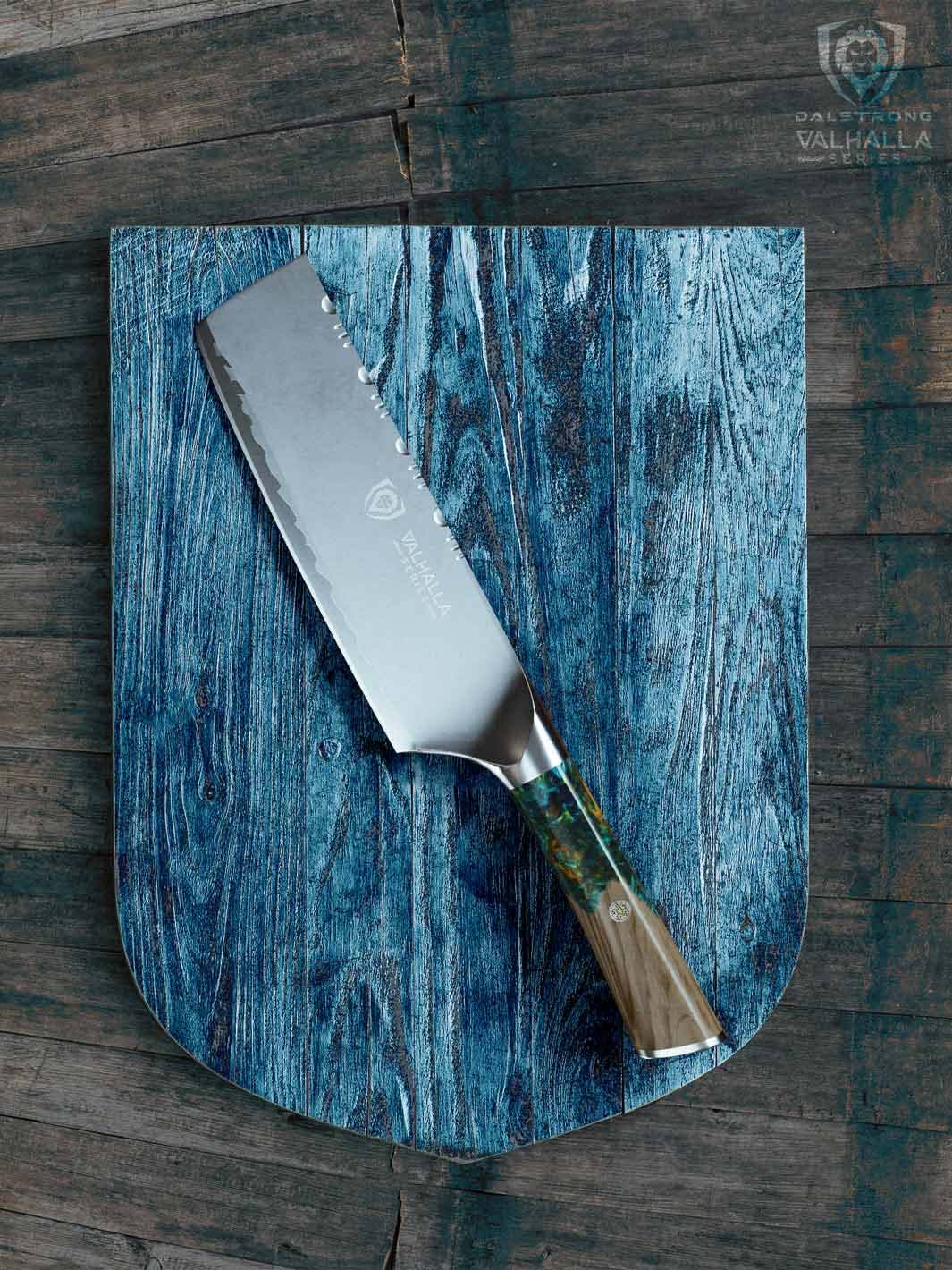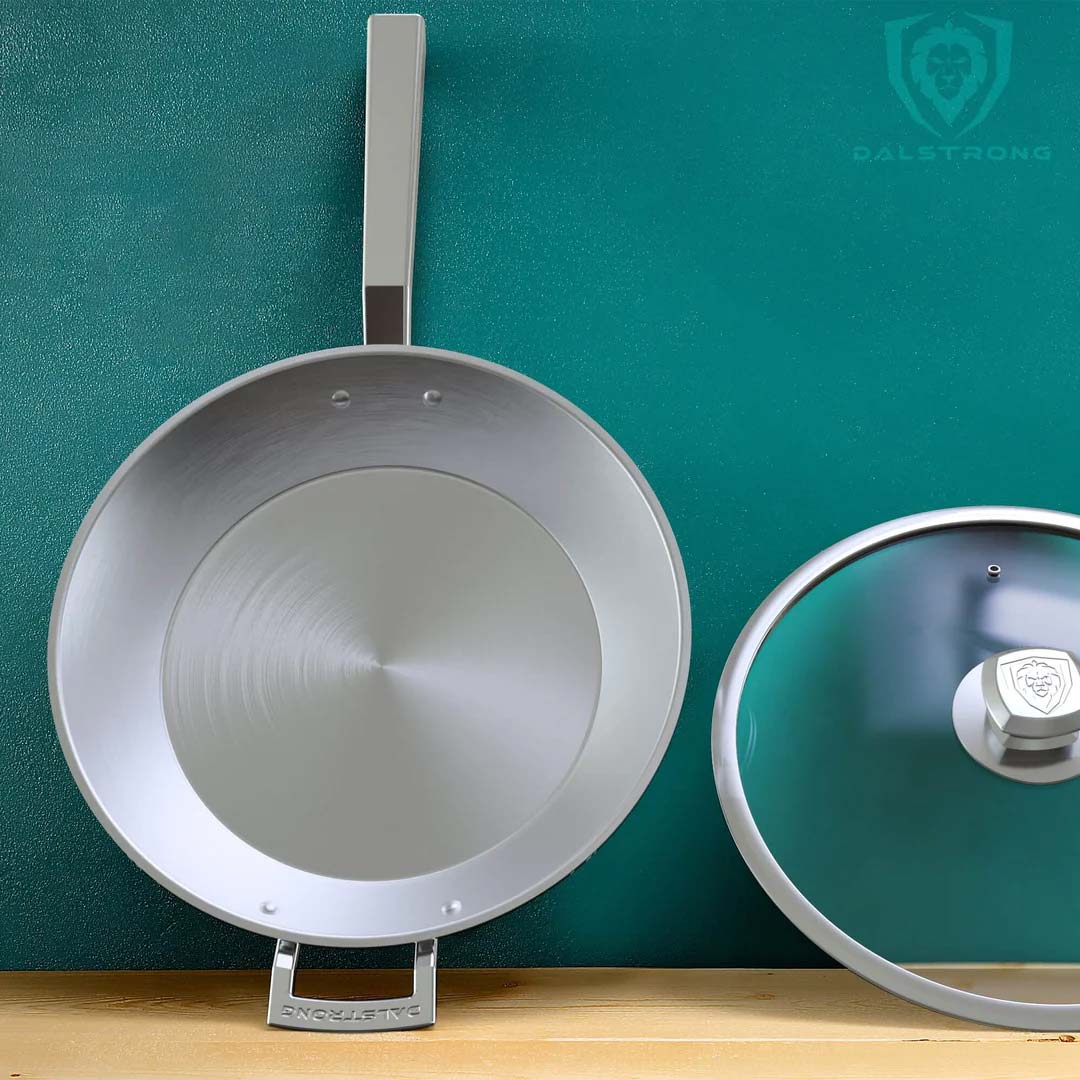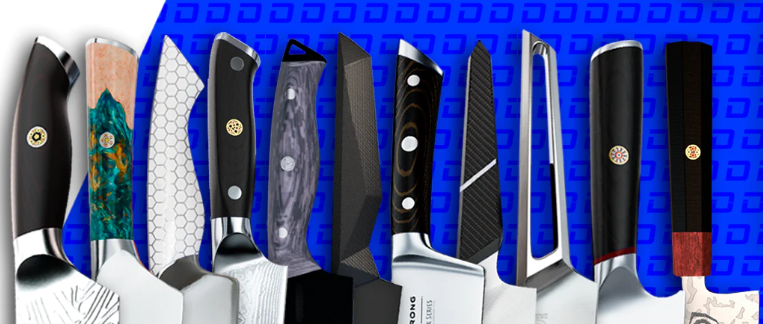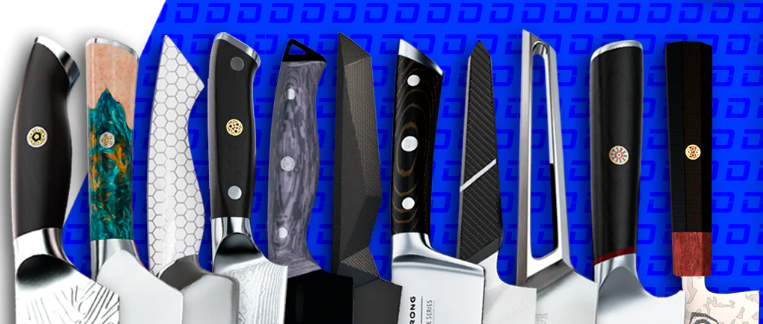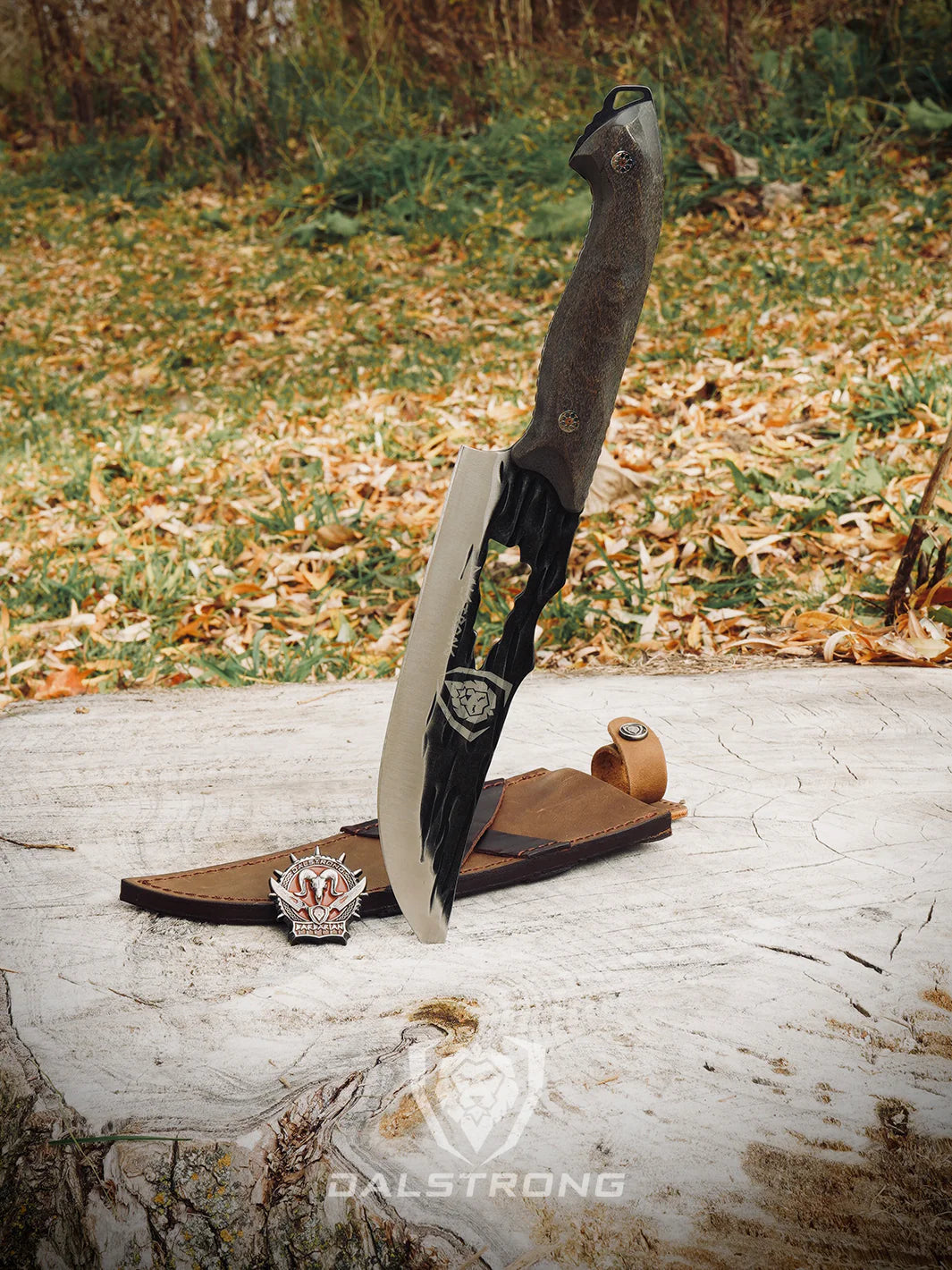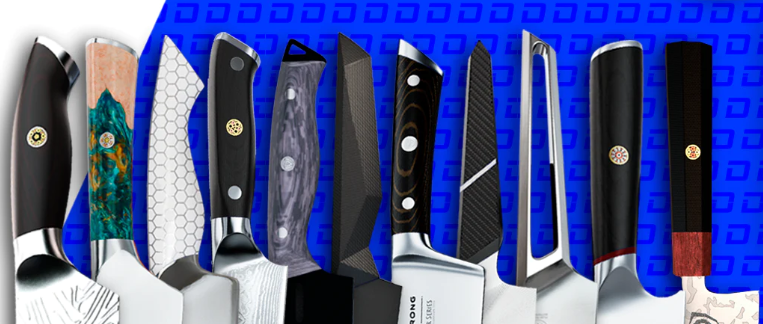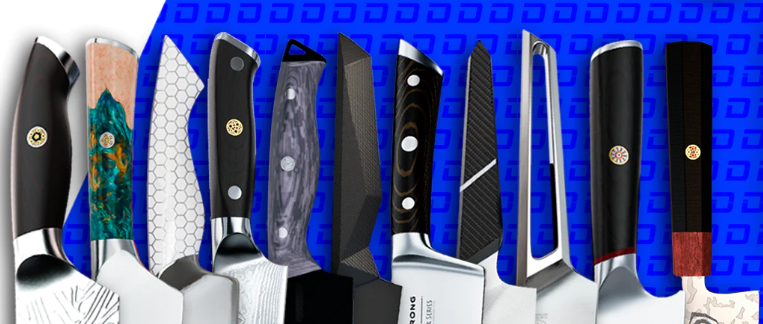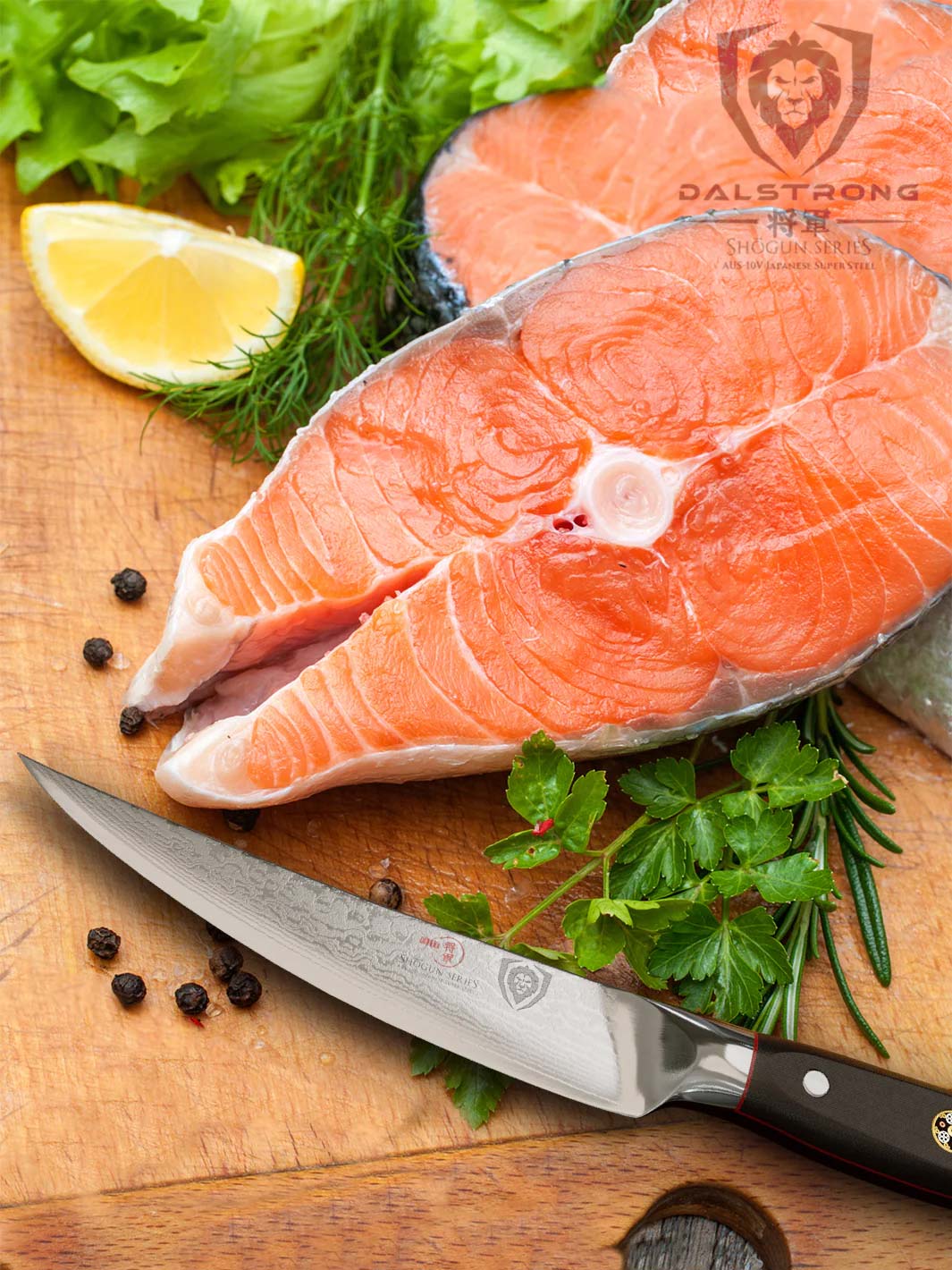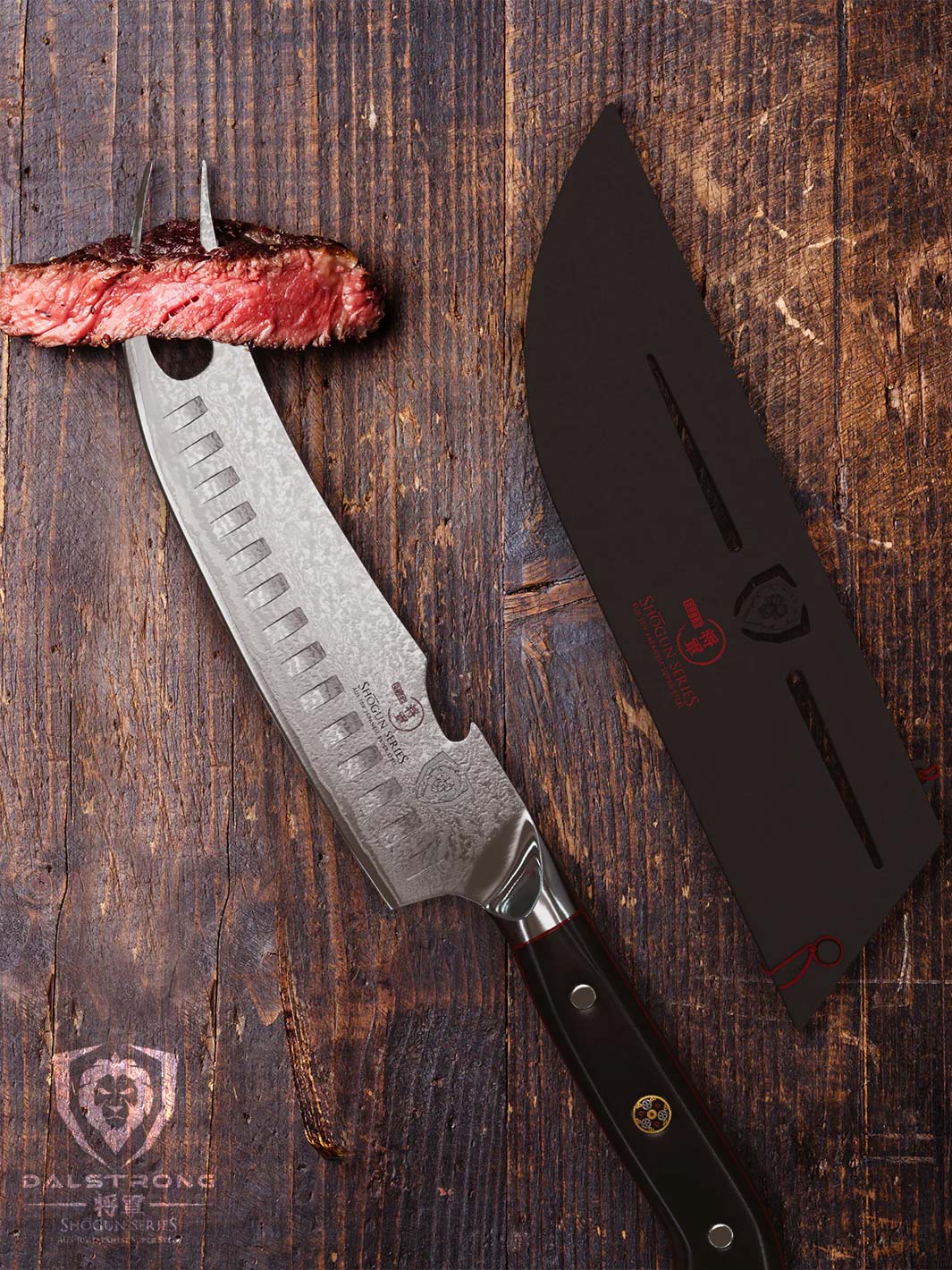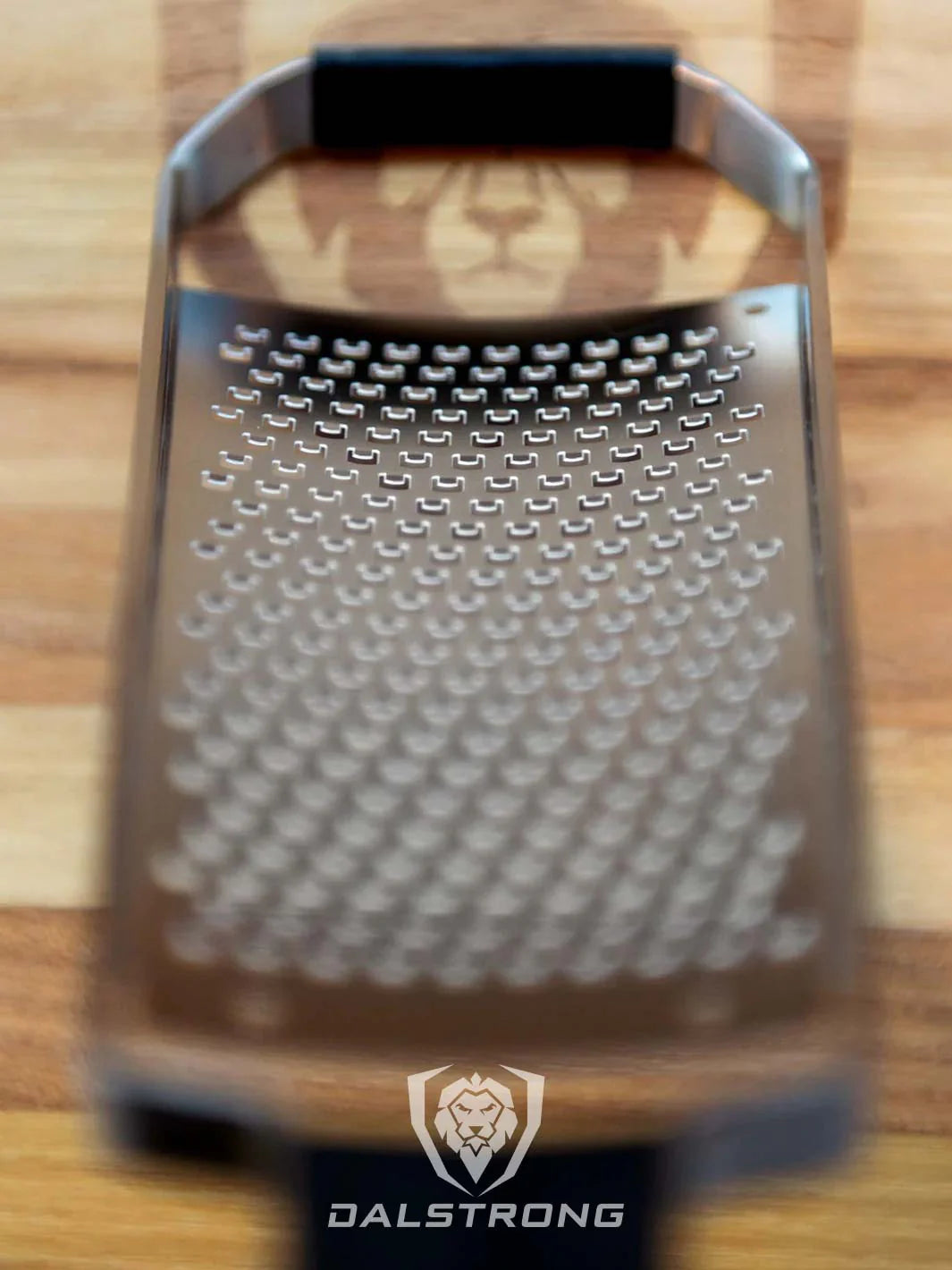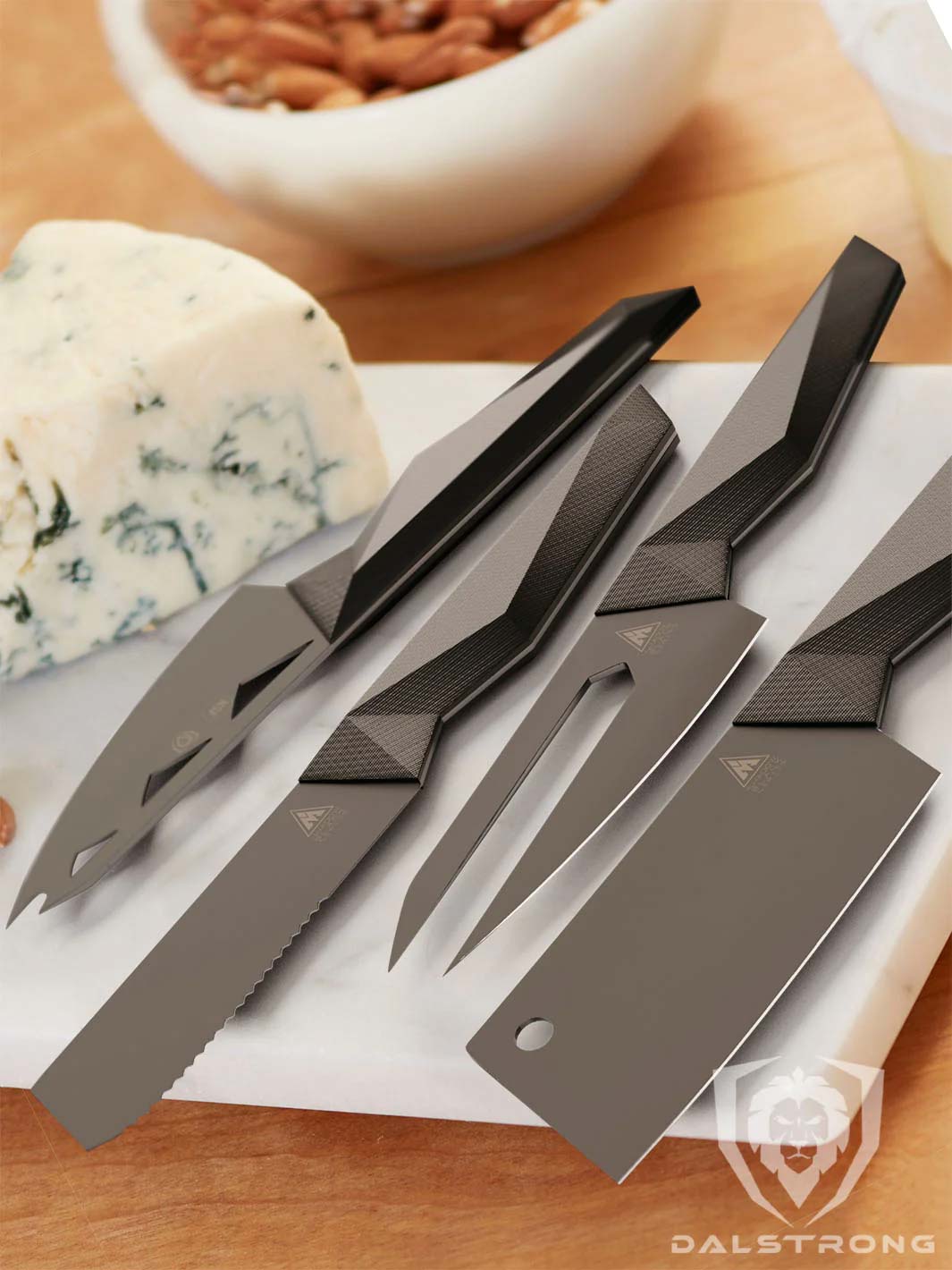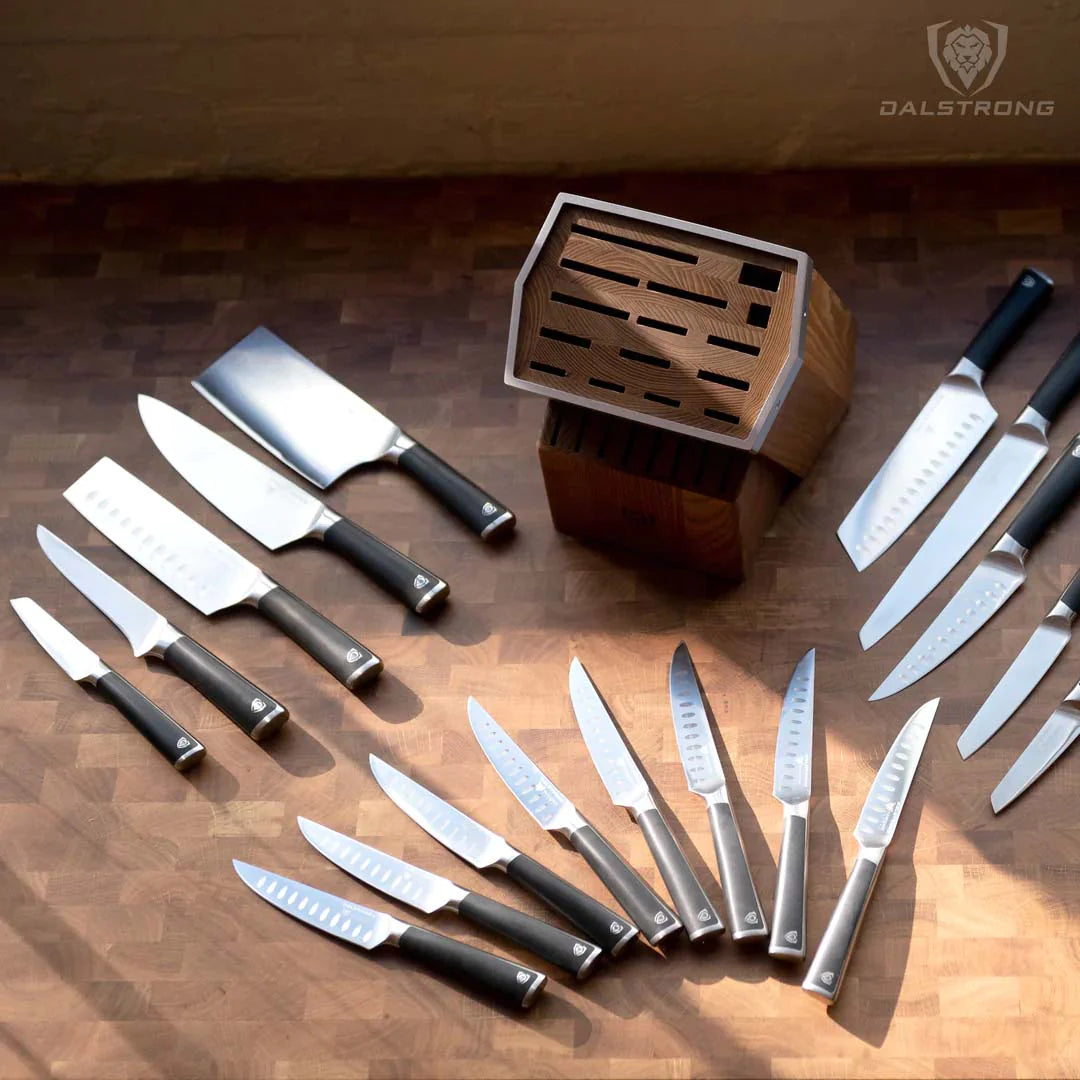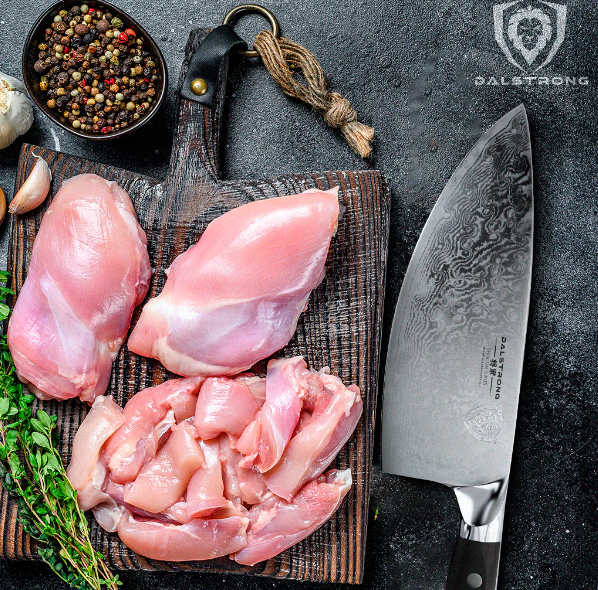How To Cut Dragon Fruit Like A Pro
How To Cut Dragon Fruit
Basic cut- Place the dragon fruit on your cutting board and slice it down the middle. You can do this widthwise or lengthwise.
- Now, your dragon fruit’s outside layer can act as a bowl for you to use to scoop the fruit inside.
- Place the dragon fruit on your Dalstrong cutting board and slice off its ends.
- Cut the fruit lengthwise
- Continue slicing the dragon fruit into wedges
- Peel the skin off, and voila
- Cut the dragon fruit into wedges, as described above.
- Slice the fruit into smaller pieces, after scooping it out with a spoon.
- Or cut the fruit into smaller pieces with the skin on, and then use a paring knife to separate the inside fruit from its outer skin.
1. What Is Dragon Fruit?
Dragon fruit, also known as pitaya, or strawberry pear, is an aesthetically spectacular, tropical fruit with numerous health benefits and a delicious taste. It comes from the dragon fruit tree, which is part of the cactus family.
What does dragon fruit look like?
Dragon fruit looks like something out of a Dali canvas. This surreal-looking tropical fruit features vibrant colors and green scales on the outside. It is often oval or pear-shaped. Most commonly, it has red skin and inside it has pulp, which is commonly white, with tiny black seeds.
Dragon fruit varieties
However, those that love to eat dragon fruit know that not all dragon fruit looks the same. Dragon fruit comes in three varieties: yellow dragon fruit (pitaya amarilla) is yellow with white flesh. Red dragon fruit (pitaya roja) is pink with red flesh. Pink dragon fruit (pitaya rosa) is pink with white flesh.
What does dragon fruit taste like?
Despite its exotic look, dragon fruit tastes similar to other fruits. It has a slightly sweet taste, which some describe as a blend between a pear, a watermelon and a kiwi.
Some tasters claim that the different types of dragon fruit have discreet flavors, with red dragon fruit being the sweetest. Yet, as we all know, taste is subjective. To know whether you like pitaya, go out and try one for yourself.
Tip: make sure your dragon fruit is ripe, because when unripe, the fruit is rather bland.
How do you eat dragon fruit?
Dragon fruit is a healthy and flavorful treat filled with vitamin C, fiber and antioxidants.. There are a number of ways to enjoy this beautiful tropical fruit.
- You can cut it in half and use a spoon to scoop the fruit out for a simple and delicious snack.
- You can dice it or cube it and add it to a fresh fruit salad.
- You can get creative and add dragon fruit to your smoothie bowl. Its flavor pairs well with anything from avocado to coconut milk, honey or mango.
- You can puree it and add it to a sauce, pudding, or frozen dessert recipe.
- You can cube your dragon fruit, put it in your freezer and eat it like a popsicle.
Dragon fruit can be enjoyed in myriad ways and in many interesting recipes. However, a couple tips are to wait until you are ready to eat it before you cut it, because after you cut it, it will begin to dry out and discolor. And make sure not to eat the skin. It does not have a pleasing taste.
2. Methods Of Cutting A Dragon Fruit
As we have already covered, there are several ways of cutting the dragon fruit. But now, you ask yourself, which ways are best for which recipes?
The basic cut
This is where you slice the fruit lengthwise or widthwise with a sharp knife. A paring knife, chef knife or utility knife are good options. Then you spoon out the flesh, using its peel as a bowl.
Don’t worry about removing the little black seeds, they are edible, and offer a crunch to complement the fruit’s soft, juicy texture.
The wedge cut and cubed cut
These are the cuts where you use your sharp knife to slice the fruit into wedges or cubes to add to a fruit salad.
Pitaya pairs well with many other fruits, including watermelon, pineapple, kiwi, strawberry, and mango. Sprinkle some lemon juice on top for an acidic kick.
Note: one dragon fruit gives you two cups of diced fruit.
Add pitaya to a smoothie to give the base a little jolt of sweetness. Try blending dragon fruit into your avocado smoothie. Their flavors blend especially well. You will never be disappointed with a delicious dragon fruit smoothie.
During the cutting process, when you separate the fruit from its outer skin, you might want to rely on a quality paring knife, as its shorter blade offers the maneuverability you will desire to detach the fruit from its outer layer.
3. More Information About Dragon Fruit
How do I store Dragon Fruit?
Store the dragon fruit in an airtight container for up to one day in the refrigerator. Or you can place it in the freezer and save it for smoothies for up to three months.
Pro tip: sprinkle a little lime or lemon juice on it before sealing it in the container. This will keep it extra fresh
When is dragon fruit in season?
Remember pitaya is a tropical fruit from cacti; it likes the heat. Lucky for us, dragon fruit lovers, it is grown in a geographically diverse set of regions. One can find dragon fruit growing in Central and South America, Southeast Asia, Mexico and Israel, Australia, the Caribbean, as well as Texas, California and Florida. This geographical diversity means that you can find dragon fruit all year round in your local market. However, its proper season is summer where it is grown.
4. Knife Recommendations For Cutting Dragon Fruit
When cutting a dragon fruit you can use a paring knife, chef knife or utility knife with a serrated blade. Dragon fruit’s skin is not tough, so you will only need a quality knife with a sharp blade.
Here are our 5 recommendations for the best knives to cut up this delicious fruit.
1. Paring Knife 4" | Phantom Series | Dalstrong ©
This Phantom Series paring knife is a precision specialist. Its razor sharp stainless steel blade is perfect for coring, mincing and peeling fruits and vegetables. This paring knife is a bit larger than your average paring knife. It will make quick work of slicing fresh fruit or prepping a tropical fruit salad.
Pros:
- Tapered blade design for durability and flexibility
- Cleans easily for low maintenance
- Polished spine to facilitate a comfortable pinch grip
- Traditional Japanese D-shaped handle designed to tuck into the palm of your hand for superior hand control, comfort and agility.
Cons:
- Some people prefer a more simple appearance to their blade
- Pakkawood handle might not meet everyone’s style
2. Paring Knife 4" | Delta Wolf Series | Dalstrong ©
The Delta Wolf Series Paring knife features a ruthlessly sharp high carbon stainless steel blade that will be a perfect addition to your knife set. It is cutlery engineered specifically for coring, mincing, chopping, and peeling fruits and vegetables.
Its onyx-black Titanium coating helps to reduce friction and corrosion. So, you will have no problems cutting through your dragon fruit, or chopping this tropical fruit up to add to a smoothie or fruit salad. The camouflage G10 handle provides style and functionality.
Pros:
- Full tang for incredible robustness & quality
- The 4” Precision forged stainless steel blade is ultra-sharp, wear-resistant, and features 60° Rockwell Hardness
- Structurally sturdy + strong impact resistance to withstand even the most vigorous slicing, dicing, and cutting
- Shock absorbance for added endurance, comfort, and grip
Cons:
- The onyx-black blade and camouflage handle might not meet some chef’s personal stye
- It may not match the theme of knives you have in your kitchen
3. Serrated Paring Knife 3.5" | Shogun Series | Dalstrong ©
This Shogun Series paring knife features a razor sharp super-steel core blade that will make quick work of your paring needs. This highly versatile blade is ideal for tough-skinned fruit such as tomatoes, oranges, lemons, limes, kiwis, avocados, and pitaya.
It also will happily slice vegetables with soft interiors, pastries, bread loaves, even tough meat. Its ergonomic handle offers you total comfort and control.
Pros:
- Incredible Edge Retention at 62+ Rockwell hardness
- Tapered blade for minimal slicing resistance and non-stick properties
- Full tang - maximum robustness. This knife is built to last a lifetime
- Beautifully engraved
Cons:
- Some people prefer straight edged blades
- Might be over some budgets
4. Chef's Knife 6" | Gladiator Series | NSF Certified | Dalstrong ©
This chef knife is smaller and more maneuverable than most chef knives. But don’t be fooled by its size, its high carbon ruthlessly sharp blade will easily manage your chopping and prepping business.
It can be the workhorse of your knife set, easily taking care of your slicing, chopping and skinning needs. This Gladiator Series chef knife features a full tang to add robustness and quality to your cutting experience. Pull this kitchen knife out of your knife block or knife bag next time you have to cut up a fruit salad or prepare dragon fruit from a smoothie or snack.
Pros:
- Tall blade height gives knuckle clearance to assist with food preparation and chopping activity
- Added chromium for stain resistance
- Cleans easily for low maintenance
- Ergonomic handle shape for maximum comfort, grip and maneuverability
Cons:
- Might prefer a paring knife for the delicate work of cutting fresh fruit
- Features a smaller blade than many other chef knives
5. Serrated Utility Knife 5.5" | Crusader Series | NSF Certified | Dalstrong ©
This minimalist, razor sharp steel-bladed utility knife meets both your aesthetic and functional needs. The edge of its blade is painstakingly honed by expert craftsmen to 16-18°– ensuring clean, precise cuts with excellent edge-retention and ease of sharpening.
This kitchen knife will make quick work of any of your tropical fruit needs. You want clean, beautiful slices of dragon fruit to serve to company, you got it. This utility knife also features an ergonomic handle for grip, comfort and maneuverability.
Pros:
- The edge is painstakingly hand sharpened to 16-18 degrees per side, maintaining the perfect balance between ultra-thin slicing and maximum resilience
- Precisely tempered for resilience
- Blade seamlessly transitions into a high-chromium stainless steel handle
- Cleans easily
Cons:
- Minimalistic look might not be to everyone’s taste
- Might not be the right utility knife for chefs who prefer non-serrated edges
5. Frequently Asked Questions
What does dragon fruit taste like?
Despite its exotic look, dragon fruit tastes similar to other fruits. It has a slightly sweet taste, which some describe as a blend between a pear, a watermelon and a kiwi.
Why can't you eat the skin of a dragon fruit?From a nutritional standpoint, dragon fruit skin can be eaten after it is washed clean of possible pesticides. However, it does not have a sweet or appealing taste. Still, the skin can make a great serving mini-bowl for the fruit itself.
How can you tell dragon fruit is ripe?Look for a bright, evenly colored outer skin. A shriveled stem or brown blotches means it is overripe. Also, touch the fruit. You want it to feel rubbery, rather than mushy and soft. If the fruit is very firm, you will want to give it a couple days to ripen before you cut it.
How do you cut a dragon fruit platter?The cube or wedge cut seems excellent ways to cut the dragon fruit to prepare it for a fruit platter. However, really this answer falls under the category of personal taste.
How do I grow my own dragon fruit?To start growing dragon fruit: separate the black seeds from the fruit flesh and pulp. Wash them, and then place them on a paper towel to dry for at least 12 hours. Sprinkle the tiny seeds onto your potting mix, in a pot or planter. Then place a layer of soil above the seeds. Keep the soil constantly moist. Wait for your dragon fruit cactus plant to start growing.
How do you clean dragon fruit?
To clean dragon fruit, wash it under cold water. Cut off the ends and slice the fruit in half. Use a melon baller or a spoon to scoop out the flesh, separating it from the pink skin. The peeled dragon fruit can be further cut into thin slices or cubes for use in salads, smoothies, or as a snack. Enjoy its mild sweetness and vibrant color in your meal prep.
How do you cut and store dragon fruit?
To cut and store dragon fruit, wash the fruit and cut off the ends. Peel the skin or cut it in half. Slice the dragon fruit or use a spoon to scoop out the flesh. The flesh contains tiny black seeds that are edible. Store any unused dragon fruit in an airtight container in the refrigerator, and enjoy it in dishes like tropical fruit salads or on its own.
Conclusion
To conclude, dragon fruit is a delicious and nutritious treat filled with antioxidants, vitamin C, and fiber that is easy to cut and eat. It also encourages the growth of probiotics. Do not be turned off by its strange appearance. While dragon fruit has a unique taste, it is one that will seem familiar. This fruit works well in many recipes, or on its own. Nature even provided it with its own outer layer bowl.
Arm yourself with a Dalstrong kitchen knife and cutting board and add ripe dragon fruit into your fruit rotation.






































































































































































